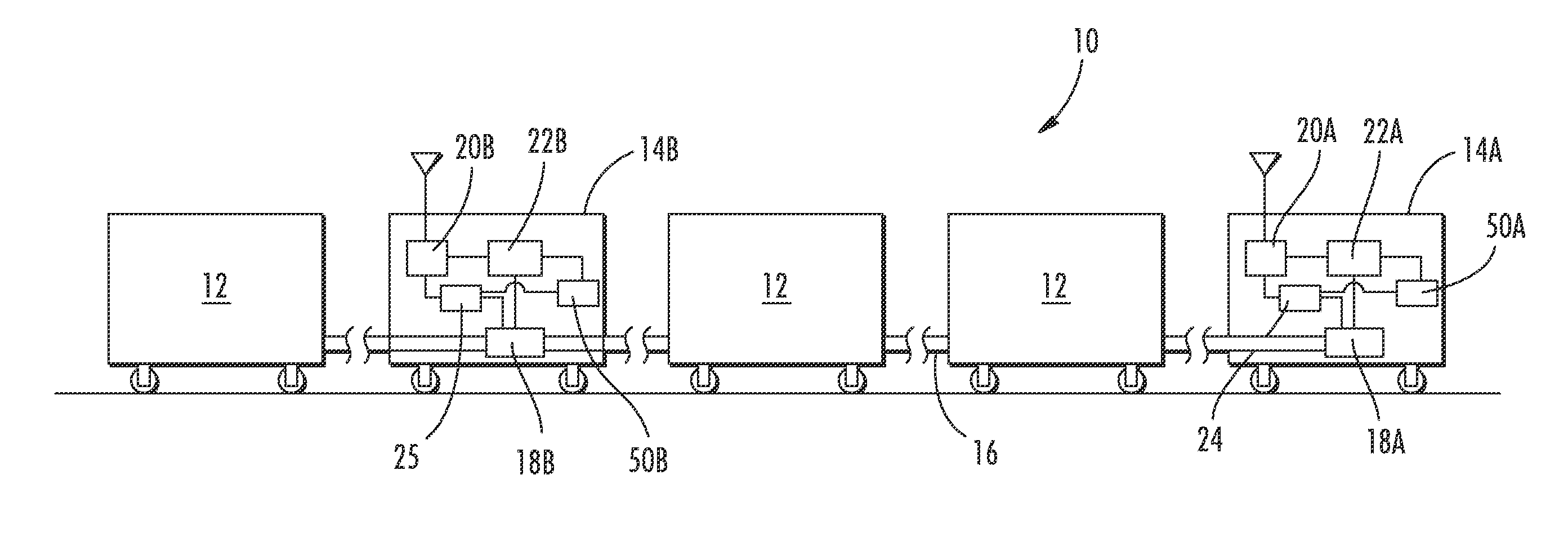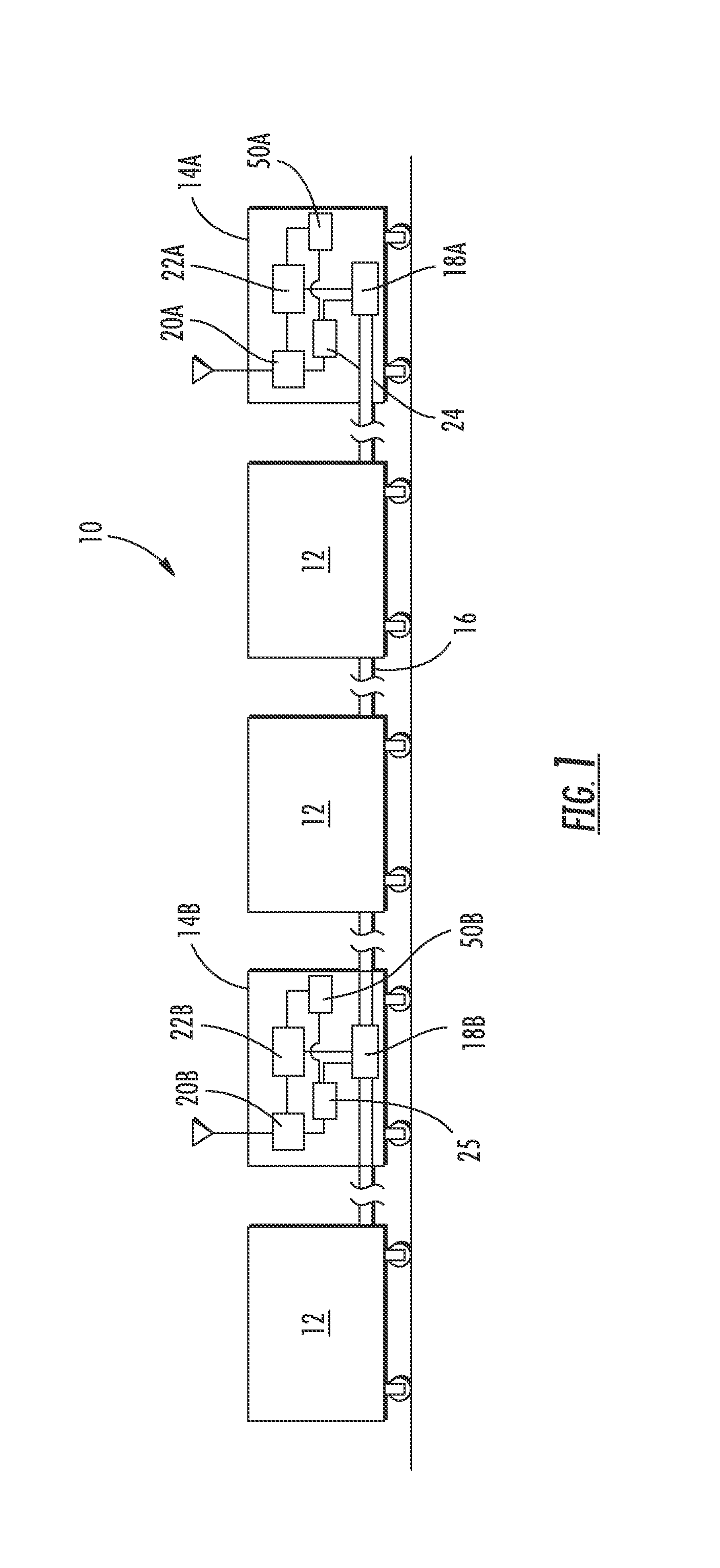Distributed train control
a technology of distributed control and trains, applied in the field of trains, can solve the problems of not being considered “vital”, high reliability, and communication protocols not being conformed,
- Summary
- Abstract
- Description
- Claims
- Application Information
AI Technical Summary
Benefits of technology
Problems solved by technology
Method used
Image
Examples
Embodiment Construction
[0018]Referring to the drawings wherein identical reference numerals denote the same elements throughout the various views, FIG. 1 depicts a train 10 incorporating a distributed control system constructed according to an aspect of the present invention. The train 10 includes a plurality of coupled cars 12, and two or more locomotives or other units which provide tractive force, referred to herein generally as “power units”14. The individual cars 12 are coupled together by a brake pipe 16 which conveys air pressure changes specified by individual air brake controllers 18 in the power units 14. As used herein, the term “air brake controller” refers generally to one or more components which cooperate to selectively hold or release pressure from the brake pipe 16 and may include mechanical valves, electrical, or electronic controls associated with those valves, or combinations thereof. Each of the cars 12 is provided with a known type of air brake system which functions to apply air bra...
PUM
 Login to View More
Login to View More Abstract
Description
Claims
Application Information
 Login to View More
Login to View More - R&D
- Intellectual Property
- Life Sciences
- Materials
- Tech Scout
- Unparalleled Data Quality
- Higher Quality Content
- 60% Fewer Hallucinations
Browse by: Latest US Patents, China's latest patents, Technical Efficacy Thesaurus, Application Domain, Technology Topic, Popular Technical Reports.
© 2025 PatSnap. All rights reserved.Legal|Privacy policy|Modern Slavery Act Transparency Statement|Sitemap|About US| Contact US: help@patsnap.com



